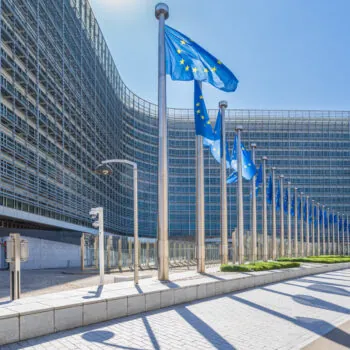Today the European Commission agreed its long-awaited new strategic long-term vision on climate change. Here are five things you need to know about the new vision:
1. Moving to net zero emissions by 2050 is the best way to protect Europeans and their prosperity
The Commission evaluated several pathways but is clear in its conclusion: achieving climate neutrality is the best option to safeguard European security and prosperity.
This assessment is supported by four factors.
First, a net zero pathway could lead to positive economic impacts up to 2% of GDP, compared to business as usual. This includes cumulative savings of €2-3 trillion in reduced fossil fuel import costs. And it is not a brake on growth: the European economy is expected to double (in comparison with 1990) as it fully decarbonises.
Second, the health benefits for European citizens are expected to be substantial, particularly through reduced air pollution. A climate neutral pathway could reduce pre-mature deaths caused by fine particulate matter by more than 40% and save €200 billion per year in health damages.
Third, the strategy will also support industrial competitiveness. By becoming the first region in the world to commit to achieving climate neutrality by 2050, the EU can accelerate innovation and capture opportunities from new clean technologies.
Finally, the shift to climate neutrality is critical for avoiding the worst impacts from climate change. The document sets out how climate change is already causing billions of Euros of damages across Europe, and these impacts are set to accelerate. Though the EU represents 10% of global emissions, by adopting a global leadership role it can support a global shift to climate stability.
2. There are multiple ways of getting to climate neutrality
Importantly, the Commission identifies multiple pathways to achieve net zero emissions, and its overall conclusions are not dependent on individual technology assumptions.
Existing technologies will get us most of the way there. Innovation makes the transition easier and supports EU industrial competitiveness. The final stretch to achieve climate neutrality requires new approaches, and the Commission analysis looks at either creating negative emissions through combining bioenergy with carbon capture and storage or through stepping up the circular economy and developing natural carbon sinks (such as forests).
Modelling exercises such as these are a useful way of sense-checking strategies and testing cost and feasibility based on what we know now, but cannot predict the future. Assumptions used now will inevitably look out of date in a few years’ time.
It would be a mistake to put too much emphasis on the specific numbers used. Models do not determine real-world energy systems: markets, regulation and consumer choice do. The important task is to set a clear direction and a strong framework that can withstand the various uncertainties.
3. Earlier action makes getting to net zero emissions even easier
The European Commission makes it clear that it is not (yet) proposing changes to the EU’s 2030 target. This seems a calculated political decision to avoid creating opposition from some of the less progressive member states.
However, the detailed modelling shows that the EU goes well beyond the current 2030 target of ‘at least 40%’ in all of the scenarios, and the net zero pathways achieve 51% GHG emissions reductions by 2030 (once land use is factored in).
Other assessments of 2050 pathways show there are big benefits from starting stronger climate now, and reaching 55-65% emissions cuts by 2030, as part of the shift to a net zero economy by 2050.
The opportunity for early climate action makes the case for climate neutrality even stronger, and a new debate on accelerating climate action beyond the current 2030 targets seems inevitable.
4. Policy change is coming – just not yet
The document is a “strategic vision” and does not set out detailed policy proposals at this stage.
Nevertheless the document is clear that change is coming, and that these policy shifts could go well beyond the traditional energy and climate policy silos.
The key levers identified are:
– Investment and finance tools will need to be adjusted to deliver the significant increase in investment required and to avoid continued investment in high carbon assets. This will include financial regulation (including a more pro-active role for the European Central Bank), reforms to EU budget spending, supporting environmental taxation and carbon pricing, and removing fossil fuel subsidies.
– Research and innovation policies should be reframed to reflect Europe’s new mission of climate neutrality. This includes re-focusing EU innovation spending onto climate priorities and finding ways to finance ‘high-risk disruptive innovation’.
– The European industrial strategy will need to be renewed to tackle the opportunities and address the challenges presented in this vision, focusing on circular economy gains, innovations in technologies, materials and processes, as well as deployment of already known technologies.
– Social policy, skills and employment policy and regional development strategies will need to respond to changing economic structures, a transformed manufacturing industry, and support a just transition for workers in high carbon industries.
– Finally, the vision document points to the need to support action by citizens and consumers. This includes promoting local ownership of investments, using cities as “laboratories for transformative and sustainable solutions”, and stresses the role consumer can play in shaping all sectors by simply choosing better products.
5. The move to climate neutrality has broad based support
Today’s vision will be the start of a wide-ranging debate across Europe. Now that the strategic vision has been published, the next steps will be for it to be discussed by the Council of the EU in coming weeks as well as at a special European leaders’ summit in Sibiu in May to agree on EU priorities for the future. The European Parliament is also preparing its position. A final mid-century climate strategy will be then submitted to the UN in 2020.
Climate negotiations in the EU are frequently challenging and arriving at a common position across Europe on a 2050 climate strategy is unlikely to be simple.
However, the Commission is not going out on a limb in its support for net zero GHG emissions by 2050. There is already support for climate neutrality from 10 countries representing half of the EU population, plus backing from cities and regions, investors, businesses, utilities and civil society.
The Commission’s strategic vision reflects an emerging consensus of where we need to go. The focus will soon need to shift to putting the vision into practice.
 This publication was supported by the LIFE program of the European Commission. E3G is the sole responsible for its content.
This publication was supported by the LIFE program of the European Commission. E3G is the sole responsible for its content.


